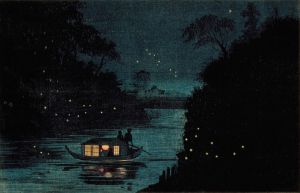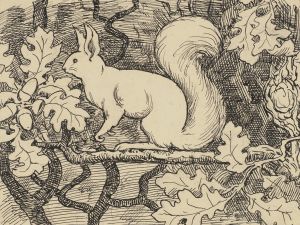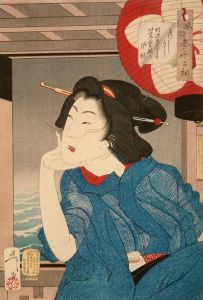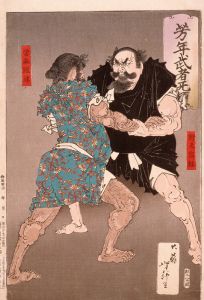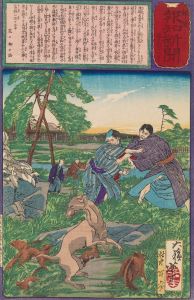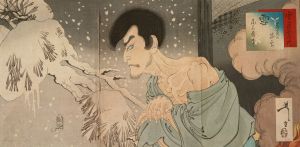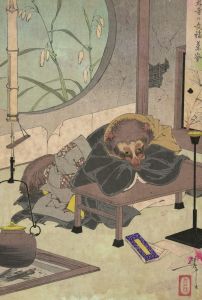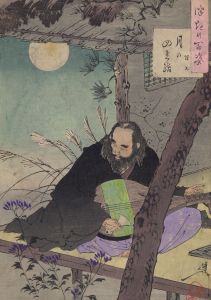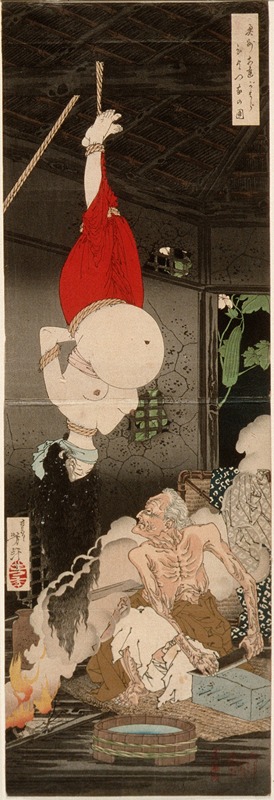
The Lonely House on Adachi Moor in Northern Japan
A hand-painted replica of Tsukioka Yoshitoshi’s masterpiece The Lonely House on Adachi Moor in Northern Japan, meticulously crafted by professional artists to capture the true essence of the original. Each piece is created with museum-quality canvas and rare mineral pigments, carefully painted by experienced artists with delicate brushstrokes and rich, layered colors to perfectly recreate the texture of the original artwork. Unlike machine-printed reproductions, this hand-painted version brings the painting to life, infused with the artist’s emotions and skill in every stroke. Whether for personal collection or home decoration, it instantly elevates the artistic atmosphere of any space.
Tsukioka Yoshitoshi was a renowned Japanese artist known for his work in the ukiyo-e genre, a style of woodblock prints and paintings that flourished in Japan from the 17th through 19th centuries. One of his notable works is "The Lonely House on Adachi Moor in Northern Japan," which is part of his series "New Forms of Thirty-Six Ghosts" (Shinkei Sanjūrokkaisen), created between 1889 and 1892. This series is celebrated for its imaginative and often eerie depictions of supernatural themes, drawing from Japanese folklore, literature, and history.
"The Lonely House on Adachi Moor" is inspired by a well-known Japanese legend involving the character of an old woman named Sodehagi. According to the tale, Sodehagi lived in a remote house on the desolate Adachi Moor, where she was known for her sinister activities, including the murder of travelers. The story is steeped in themes of horror and the supernatural, which Yoshitoshi captures vividly in his artwork.
Yoshitoshi's depiction of the scene is both haunting and atmospheric. The print illustrates the isolated house on the moor, enveloped in an eerie ambiance that reflects the desolation and mystery of the location. The use of color and shadow in the print enhances the sense of foreboding, a hallmark of Yoshitoshi's style in his later years. His work often explored the darker aspects of human nature and the supernatural, and this piece is no exception.
The "New Forms of Thirty-Six Ghosts" series, including "The Lonely House on Adachi Moor," is significant in Yoshitoshi's oeuvre as it represents a culmination of his artistic development. By the time he created this series, Yoshitoshi had experienced both personal and professional challenges, including the decline of the ukiyo-e tradition in the face of modernization in Japan. Despite these challenges, or perhaps because of them, Yoshitoshi's later works are marked by a depth of emotion and technical mastery that have cemented his legacy as one of the last great masters of ukiyo-e.
Yoshitoshi's work is characterized by its dynamic compositions and innovative use of color and line, which helped to revitalize interest in the ukiyo-e genre during a period of cultural transition in Japan. His ability to convey complex emotions and narratives through his prints has earned him a lasting place in the history of Japanese art.
"The Lonely House on Adachi Moor" and the rest of the "New Forms of Thirty-Six Ghosts" series continue to be appreciated for their artistic and cultural significance. They offer insight into the rich tapestry of Japanese folklore and the enduring appeal of ghost stories and supernatural themes. Yoshitoshi's work not only reflects the anxieties and fascinations of his time but also resonates with contemporary audiences, highlighting universal themes of fear, isolation, and the unknown.
In summary, Tsukioka Yoshitoshi's "The Lonely House on Adachi Moor in Northern Japan" is a compelling example of his late work, showcasing his skill in depicting the supernatural and his ability to evoke emotion and intrigue through the medium of ukiyo-e.






